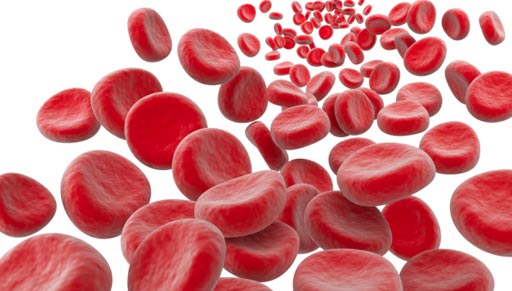Light-Activated Drug Transport System Based on RBC Carriers
By LabMedica International staff writers
Posted on 18 Jan 2017
A novel system for precise delivery of toxic anticancer drugs is based on the use of red blood cells as carriers to transport immobilized drug complexes that are released at specific sites upon exposure to light.Posted on 18 Jan 2017
Investigators at the University of North Carolina found that membrane-permeable drugs could be rendered membrane impermeable by covalent attachment to cobalamin (Cbl) through a photocleavable linker. These Cbl-drug conjugates could be trapped within lipid-enclosed compartments in the dark. The investigators adapted red blood cells for this purpose. Subsequent exposure to light broke the Cbl-drug bond and enabled the secretion of the bioactive species from the red blood cells.

Image: A scanning electron micrograph (SEM) image of human red blood cells (Photo courtesy of MPI).
The investigators reported in the December 23, 2016, issue of the journal Angewandte Chemie that photorelease of the trapped drug was triggered by wavelengths in the red, far-red, and near-IR regions, which could be pre-assigned by affixing a fluorophore with the desired excitation wavelength to the Cbl-drug conjugate. Breaking the weak energy bond between vitamin B12 and the drug was facilitated by the attached fluorescent molecule, which captured and focused the long wavelength light that ultimately cut the bond between the drug and the vitamin carrier.
"The problem is when you start using four or five very toxic drugs you are going to have intolerable side effects," said senior author Dr. David Lawrence, professor of pharmacy at the University of North Carolina. "However, by focusing powerful drugs at a specific site, it may be possible to significantly reduce or eliminate the side effects that commonly accompany cancer chemotherapy. Using light to treat a disease site has a lot of benefits beyond the "is not-that-cool" factor. Those benefits could include avoiding surgery and the risk of infection, making anesthesia unnecessary and allowing people to treat themselves by shining a light on a problem area, such as an arthritic knee."













